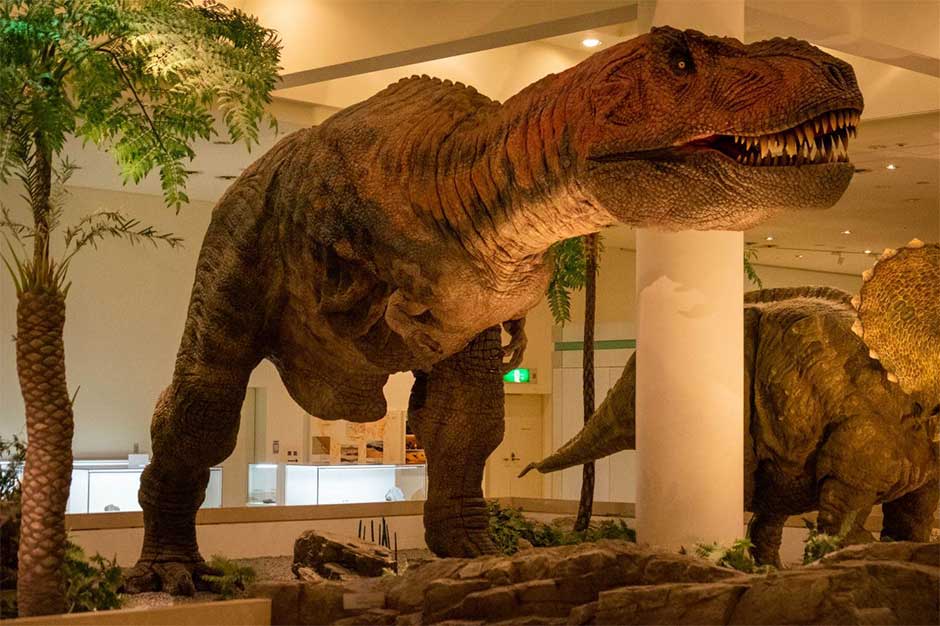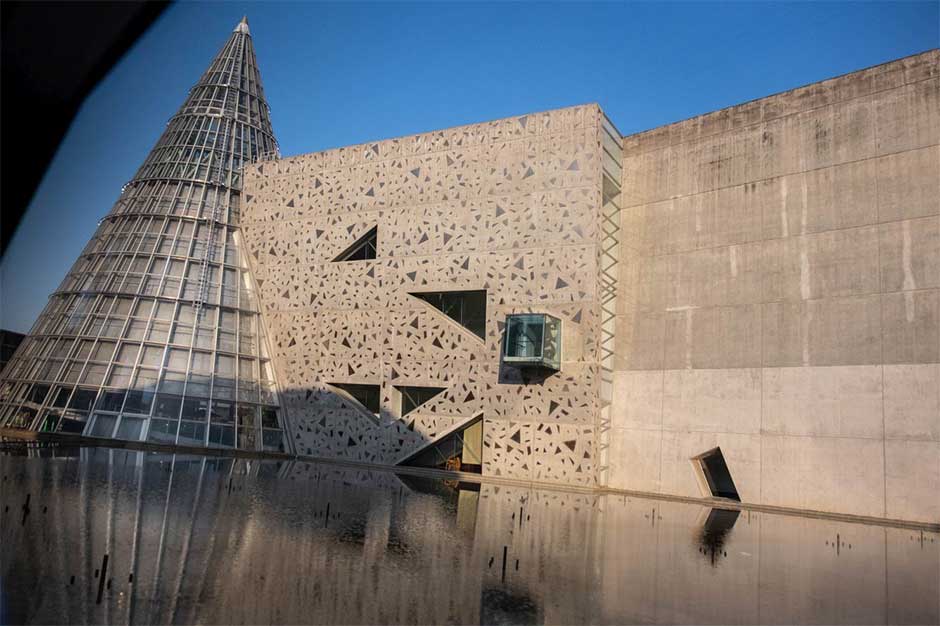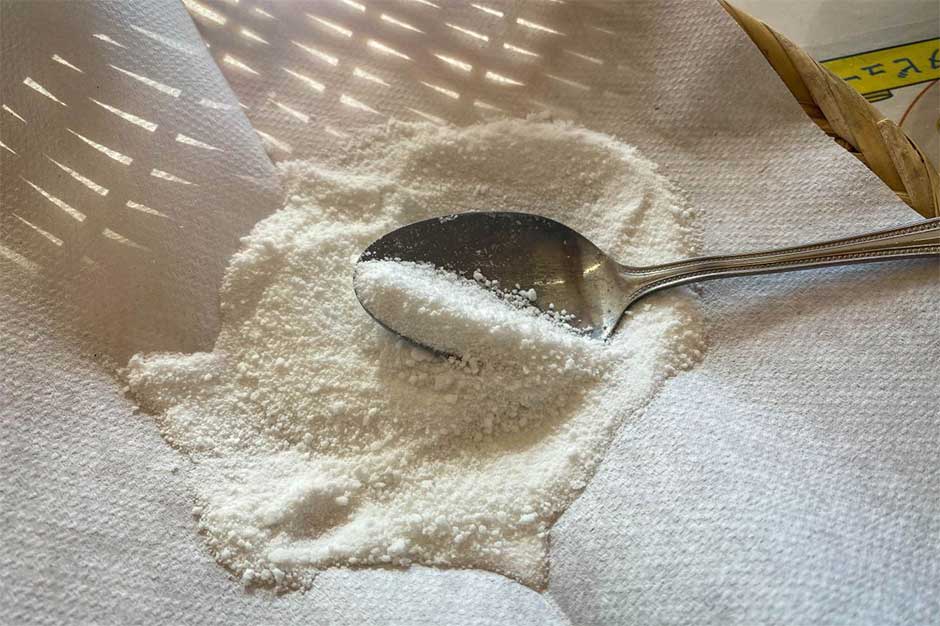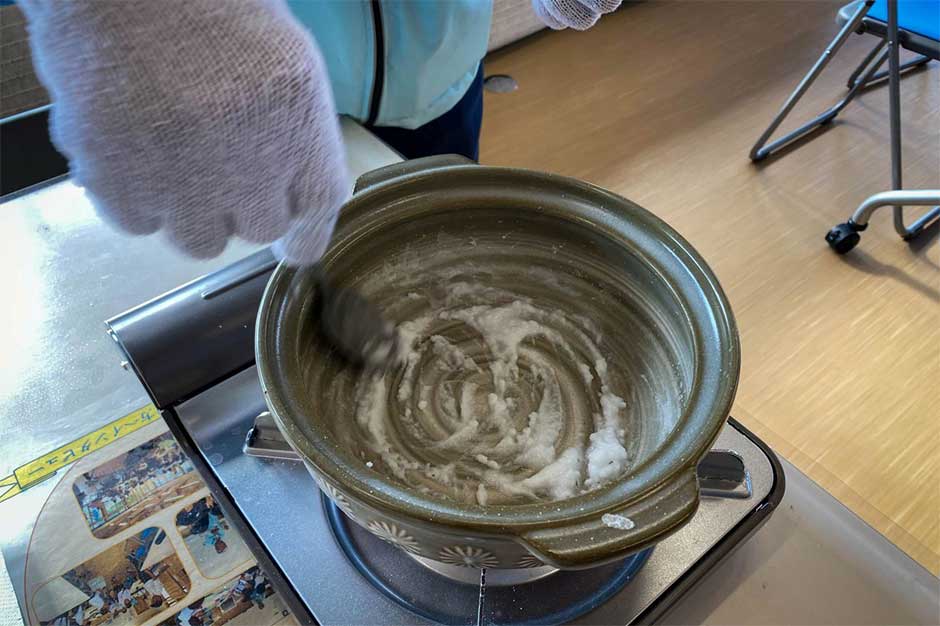Akagane Museum
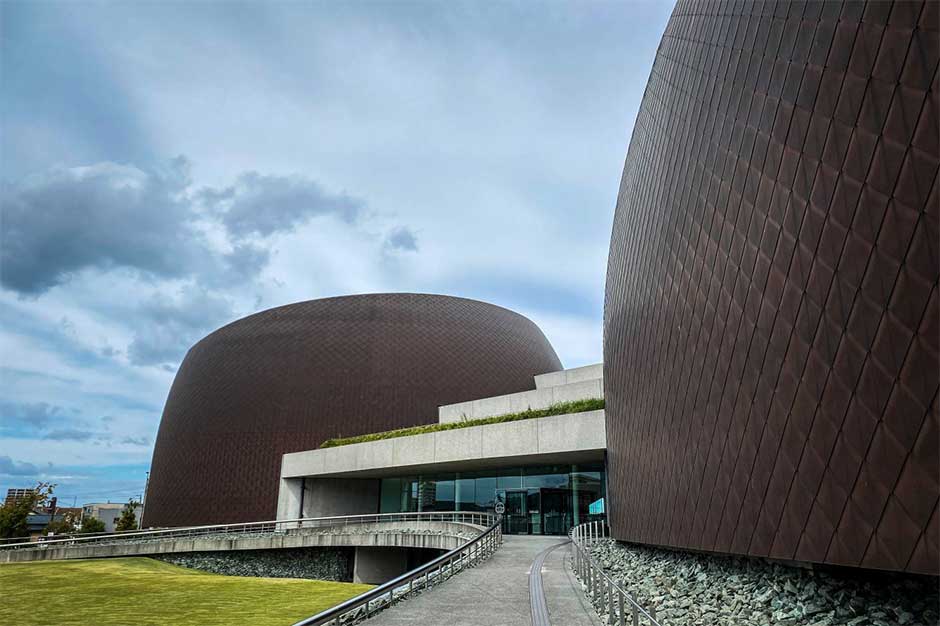
The Akagane Museum is an elegant modern building located near JR Niihama Station. Curved wings clad in copper scales flank a rectangular glass entrance. The curves and straight lines continue inside the building, creating an airy, agreeable space. The walls are white, while dark wood is used on the stairs and benches.
The main exhibits in the museum are related to the Taikodai Festival held in autumn in Niihama, when juggernauts known as taikodai or ‘drum platforms’ are pulled through the city. Each area of the city has its own taikodai, and the taikodai of each district is exhibited for two months on a rotating basis. They’re adorned with traditional Japanese arts such as wood carving, embroidery, tasselling, and fabrics. If you’re not in Niihama for the Taiko Festival, you can get a flavour of it in the 360° cinema.
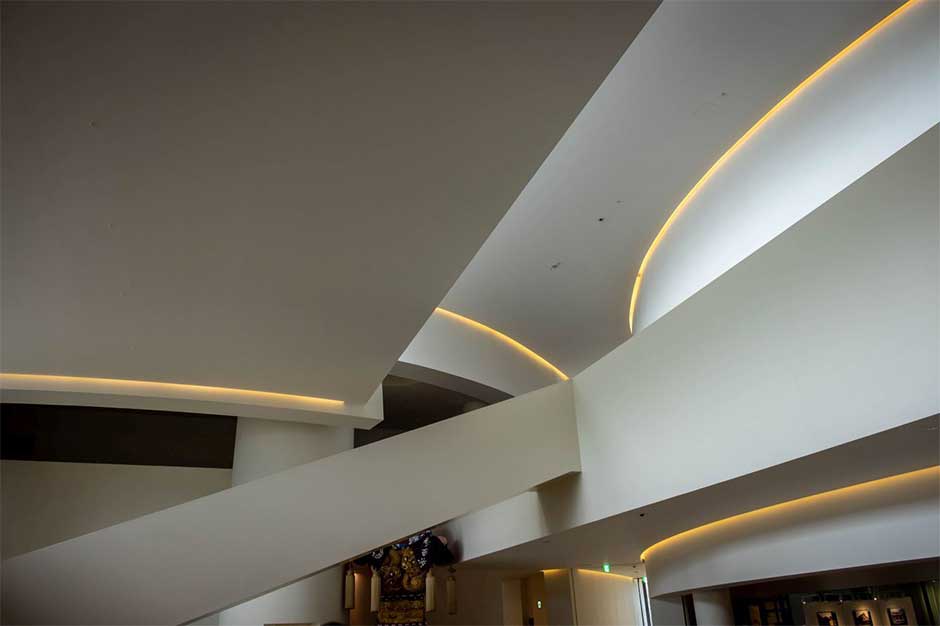
Entry to the Taikodai Museum is free of charge, but admission is charged for the temporary exhibitions held in the other galleries.
